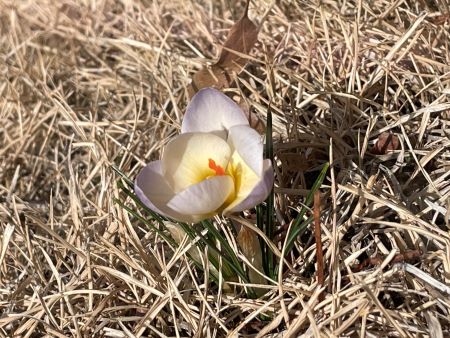Crocus

Crocus are members of the Iris family and there are about 90 species of spring flowering early bloomers. The name crocus is a middle English word for “saffron plant” as saffron comes from the dried stigmas of one of the species. They are native to the Mediterranean and eastern Europe to northwest China. Crocus are actually corms rather than bulbs. Corms are fleshy vertical underground stems that act as food storage structures for some plants. Corms are solid tissue where bulbs are immature layers of leaves. Crocus need full sun to partial shade and well drained soil when possible. They do tolerate drought but prefer to be kept damp during the growing season. Crocus bloom in early spring and have a wide variety of bloom colors. Crocus blooms will actually close at night or on cloudy days to reopen when the sun comes back out again. After a crocus has finished blooming, leave the foliage intact for at least six weeks so the corms can store food for next years growing season. Crocus are planted in the fall and look best in masses, along borders of beds or in naturalized areas. When planting crocus they should be buried about 2.5” deep and 2” apart. The biggest pest issue of Crocus are squirrels and other rodents who will dig up the corms to eat. As a fun fact the corms of crocus can actually be cooked and eaten as a vegetable.

Have questions? Contact our office where our Horticulture Extension Agent will assist you with questions.
Phone: (316) 321-9660
Email: callae@ksu.edu